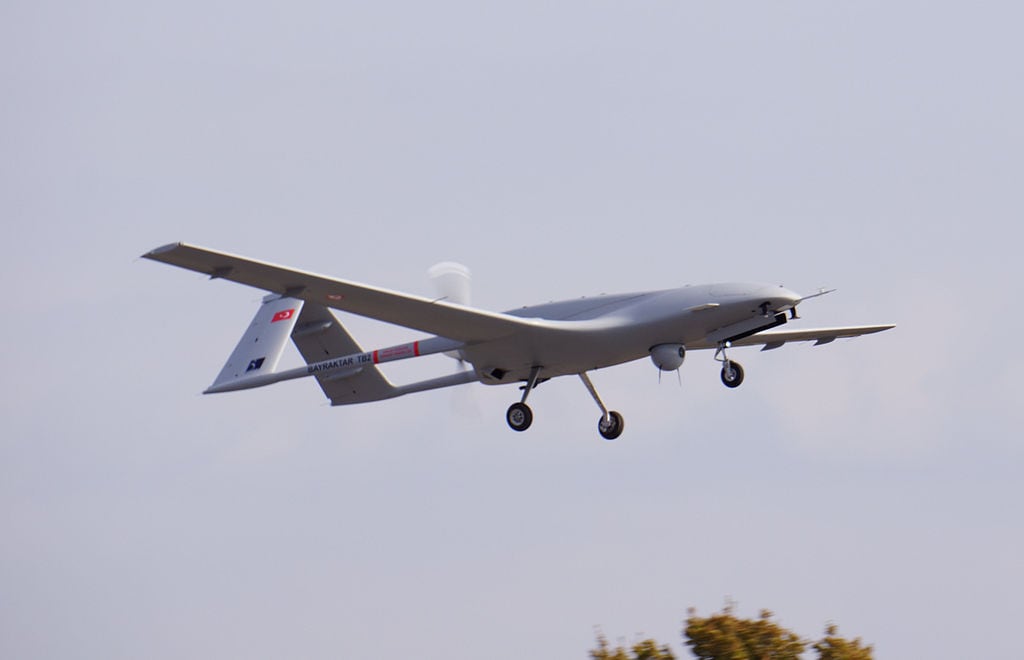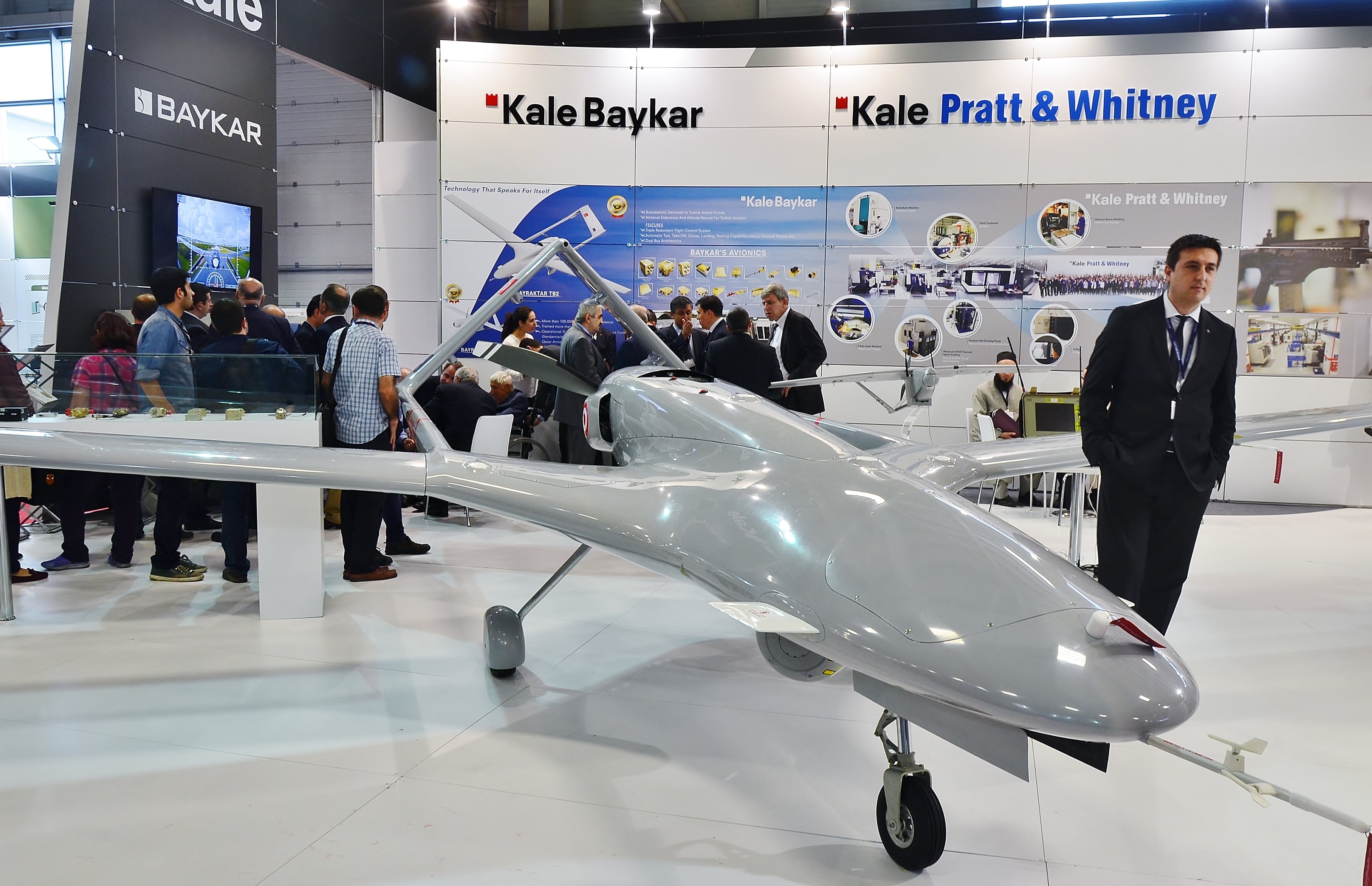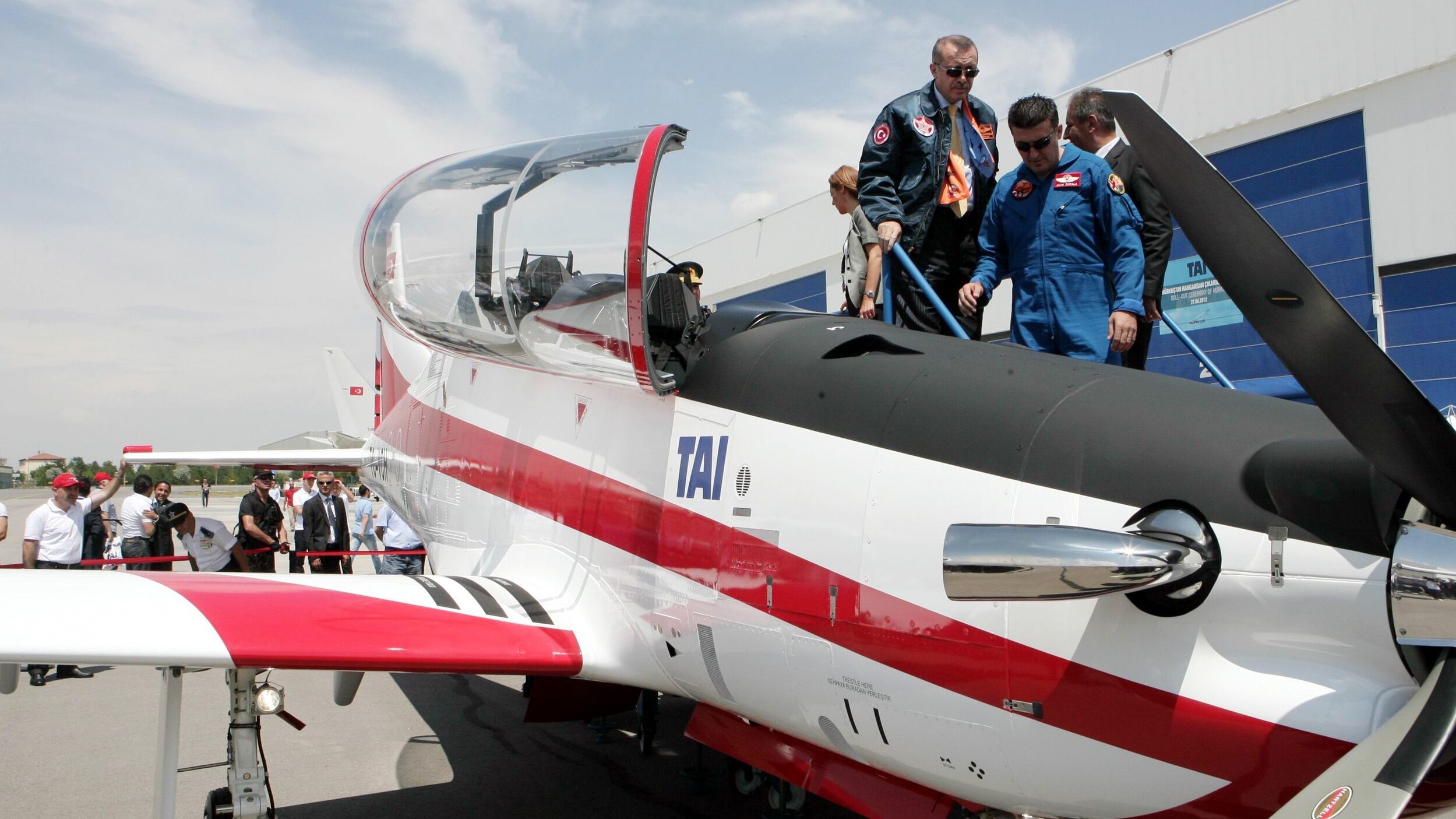ANKARA, Turkey — The growing asymmetrical threats on both sides of Turkey’s border with Syria and Iraq have compelled the country’s military, procurement and industry officials to step up efforts to boost new drone programs, even as allies continue to hold back on support.
Perhaps one of the most telling signs of progress is completion of the development phase of a program to build the country’s first drone engine.
Officials with Turkey’s national engine maker, Tusas Engine Industries say the PD170 engine has successfully gone through initial tests, meeting all performance criteria. Nearly five years in the making, TEI has been working on the PD170 since December 2012 when it signed a development contract with Turkey’s procurement authority, the Undersecretariat for Defense Industries, or SSM. The 2.1-liter turbo-diesel PD170 can produce 170 horsepower at 20,000 feet, and 130 horsepower at 30,000 feet. It can generate power at a maximum altitude of 40,000 feet.
RELATED

The PD170 was designed for the Anka, Turkey’s first indigenous medium-altitude, long-endurance drone.
TEI officials said the first PD170 would soon be delivered to Turkish Aerospace Industries. The engine’s “maturity tests” are ongoing, and TEI hopes to win certification for the engine in 2018.
The ‘brave man’ and the ‘falcon’
Meanwhile, government-owned defense technologies company STM says it started a mass production program for a series of new drones with high-tech capabilities. These drones will be used by the Turkish military for anti-terrorism operations in the country’s predominantly Kurdish southeast where fighting between the government and Kurdish insurgency has claimed more than 40,000 lives since 1984.
SSM’s chief, Undersecretary Ismail Demir, said now under mass production are what officials dub “kamikaze drones.” The first deliveries to the Turkish military would begin later this year. The “autonomous kamikaze drones” have a strike-and-hit capability. They are equipped with artificial intelligence algorithms for monitoring.
One of the drones is the Alpagu, or “brave man” in ancient Turkic languages. The Alpagu can be manually or autonomously operated, has fixed wings and can be launched from a lancer. It can be made ready for launch within 45 seconds.
The Togan, translated to “falcon” in ancient Turkish, was developed for monitoring purposes and uses AI algorithms. STM officials say the Togan features fairly high-optical zooming capabilities and high-flight performance.
The Turkish military will operate the Togan alongside the Alpagu and the Kargu, another kamikaze drone.
Homeland security and industry response
Turkey’s military and procurement officials have increasingly relied on various drone systems, most notably to boost the country’s asymmetrical fight against Kurdish insurgents and hostile Islamic groups fighting in the Syrian civil war. A two-year cease-fire with the Kurdish insurgents ended in July 2015, and thousands have died since in a renewed cycle of violence.
RELATED

“There is increasing appetite from the end user [the military] for drone systems and subsystems of all possible types,” an STM official said. “Not just our company, but the whole industry is working on various programs.”
The local industry is thriving to cope with the demand. In March, Kale-Baykar, a privately owned Turkish venture, delivered a batch of six armed drones to the Turkish military. The Bayraktar TB2 drone would be stationed in Elazig close to the Kurdish insurgency zones. Turkey tested the Bayraktar last year. The drone successfully hit a target at the Konya fire test field in central Anatolia from a distance of 8 kilometers. The Bayraktar uses the MAM-L and MAM-C, both miniature smart munitions developed and produced by Roketsan.
RELATED

Turkey’s local industry is also developing the BSI-101 — a system for signals intelligence — for the Bayraktar to put an end to Turkey’s dependence on U.S.-made sigint systems for drones. The Bayraktar can fly at a maximum altitude of 24,000 feet. Its communications range is 150 kilometers. The aircraft can carry up to 55 kilograms of payload.
Further enhancing capabilities, Meteksan Savunma, a privately owned Turkish defense company, said it successfully developed the country’s first indigenous automatic takeoff and landing, or ATOL, system for drones. The company said the system (OKIS in its Turkish acronym) aims to replace imported ATOL systems currently used in Turkish-made drones.
At the end of June, SSM released a request for information for a new program for the purchase of a drone system able to take aerial photography. SSM said the competition would only be open to local producers. That same month, SSM released another RFI for the acquisition of a ship-based vertical takeoff and landing drone system.
Burak Ege Bekdil was the Turkey correspondent for Defense News.







